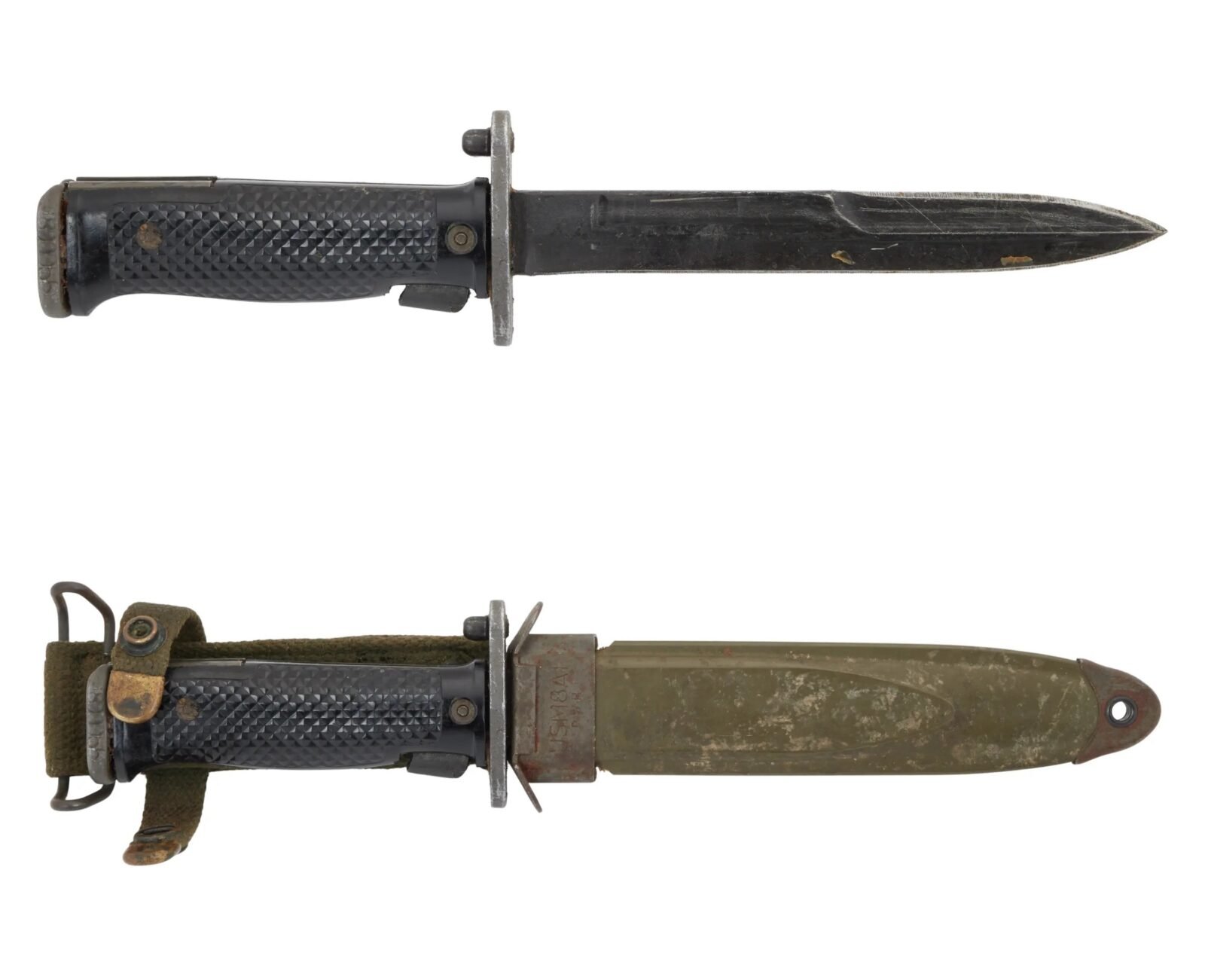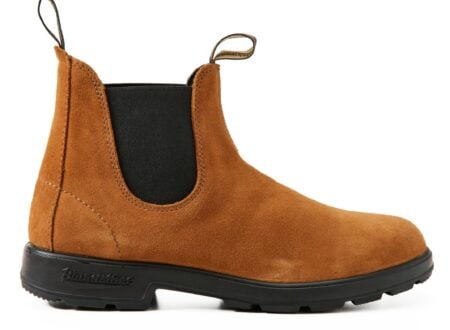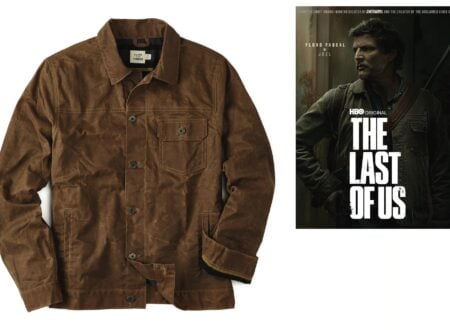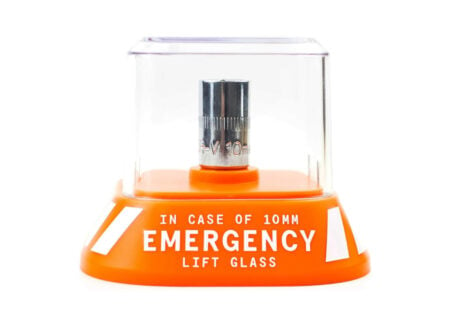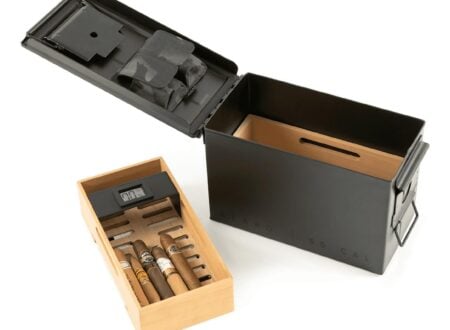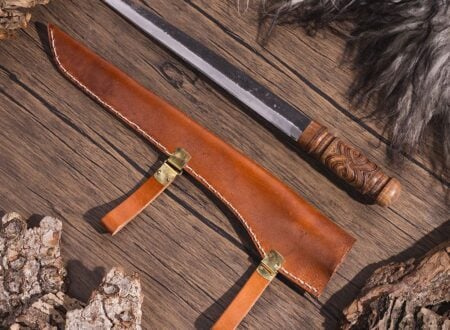This is the U.S. Army M4 bayonet (with an M8/M8A1 scabbard), that was personally owned by Elvis Presley during his time in the military, stationed in Germany.
It appears to be in decent condition given the age – Elvis was stationed in Germany from 1958 until 1960 when he returned stateside, bringing his gear and his BMW 507 Roadster back to the US with him.
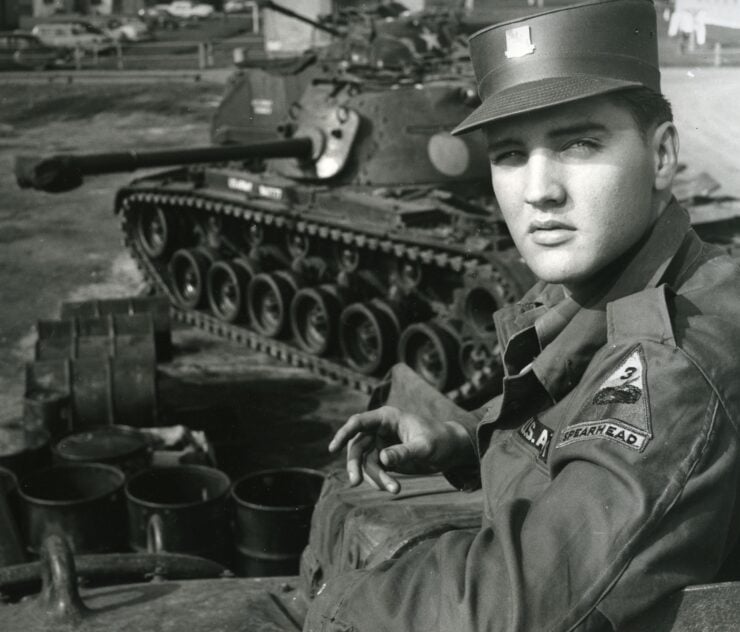

History Speedrun: The U.S. Army M4 Bayonet
The U.S. Army M4 bayonet debuted in 1944, towards the end of WWII, for use with the M1 Carbine – a lighter weight (when compared to the M1 Garand) semi-automatic rifle that was first issued during WWII, and used during the Korean and Vietnam wars before being replaced with the M14.
The M1 Carbine was one of the most widely produced U.S. small arms of World War II, it had been designed to fill the gap between a pistol and a full-sized infantry rifle. Developed by Winchester in 1941, it fired the .30 Carbine (7.62×33 mm) cartridge, this was a light, intermediate-power round fed from a detachable magazine.
The weapon weighed under 6 lbs, making it ideal for paratroopers, officers, and support troops who needed more reach and punch than a sidearm offered but less burden than the heavier M1 Garand. Though visually similar, the two rifles shared little mechanically.
The M1 Garand had been adopted in 1936 and it fired the far more powerful .30-06 Springfield cartridge from an eight-round en-bloc clip and served as the U.S. Army’s primary battle rifle. The Carbine was quicker to handle but lacked the range and stopping power of the Garand, which remained the standard issue for front-line infantry.
Later in the war, a bayonet mount was added to the M1 Carbine, leading to the introduction of the M4 bayonet, which was derived from the M3 fighting knife. The M4 had a 6.75 inch spear-point blade, a leather-washer grip, and a redesigned pommel to attach to the Type III barrel band with bayonet lug – relatively few lug-equipped carbines reached combat before V-J Day, with many retrofitted later.
It came paired with the M8 or M8A1 fiberglass scabbard, a pattern later standardized across multiple U.S. bayonets. The M4’s lineage continued long after WWII, influencing later American bayonets including those for the M16 rifle.
Elvis Presley’s U.S. Army M4 Bayonet
The M4 bayonet you see here was issued to Elvis Presley when he first joined the U.S. Army as a private in 1958. It was kept by him through both promotions, initially to Specialist Fourth Class and then to Sergeant, before he was honorably discharged in 1960.
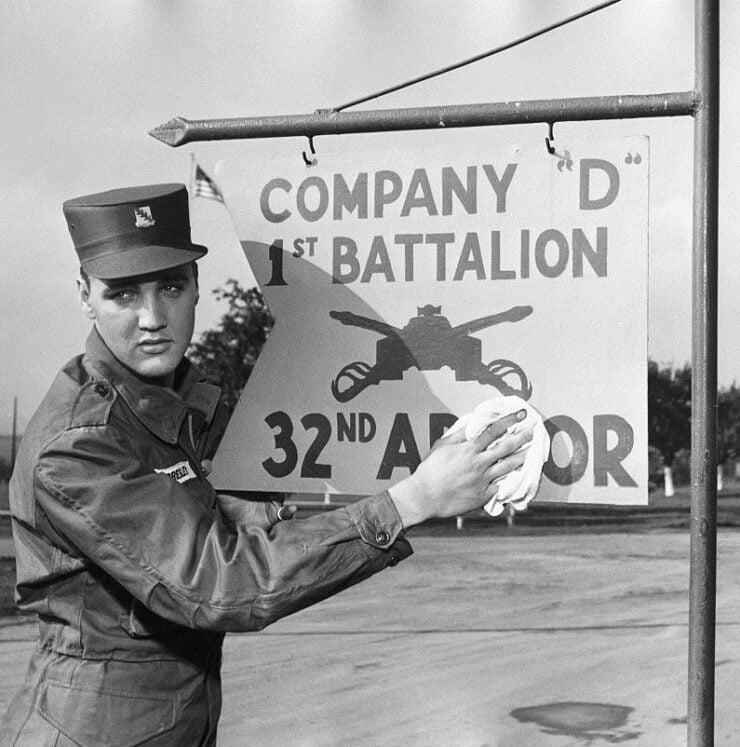

The bayonet is accompanied by its original M8/M8A1 scabbard, and they both show the patina and age-related wear and tear you might expect given their 67+ year age and the fact that neither have been restored to keep their originality in place.
The pair are now bring offered for sale in an online auction by Julien’s with a price guide starting at just $800 USD. If you’d like to read more or register to bid you can visit the listing here.

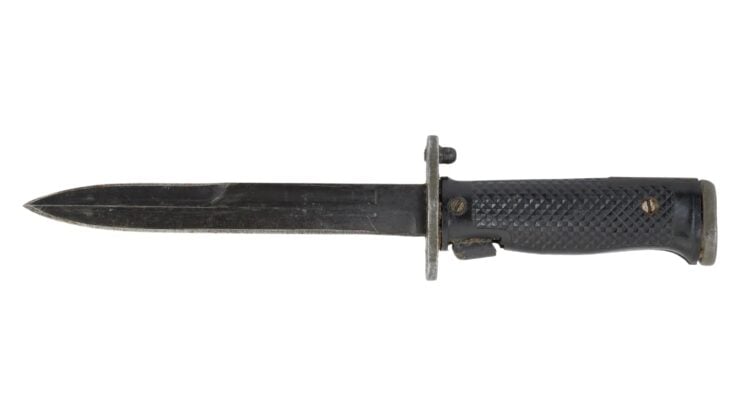


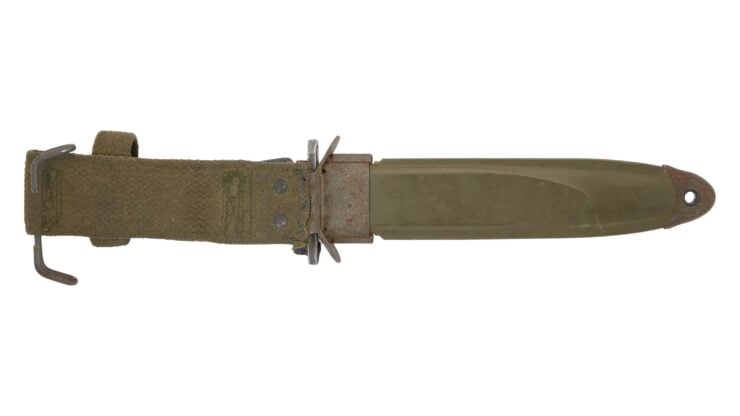
Images courtesy of Julien’s

